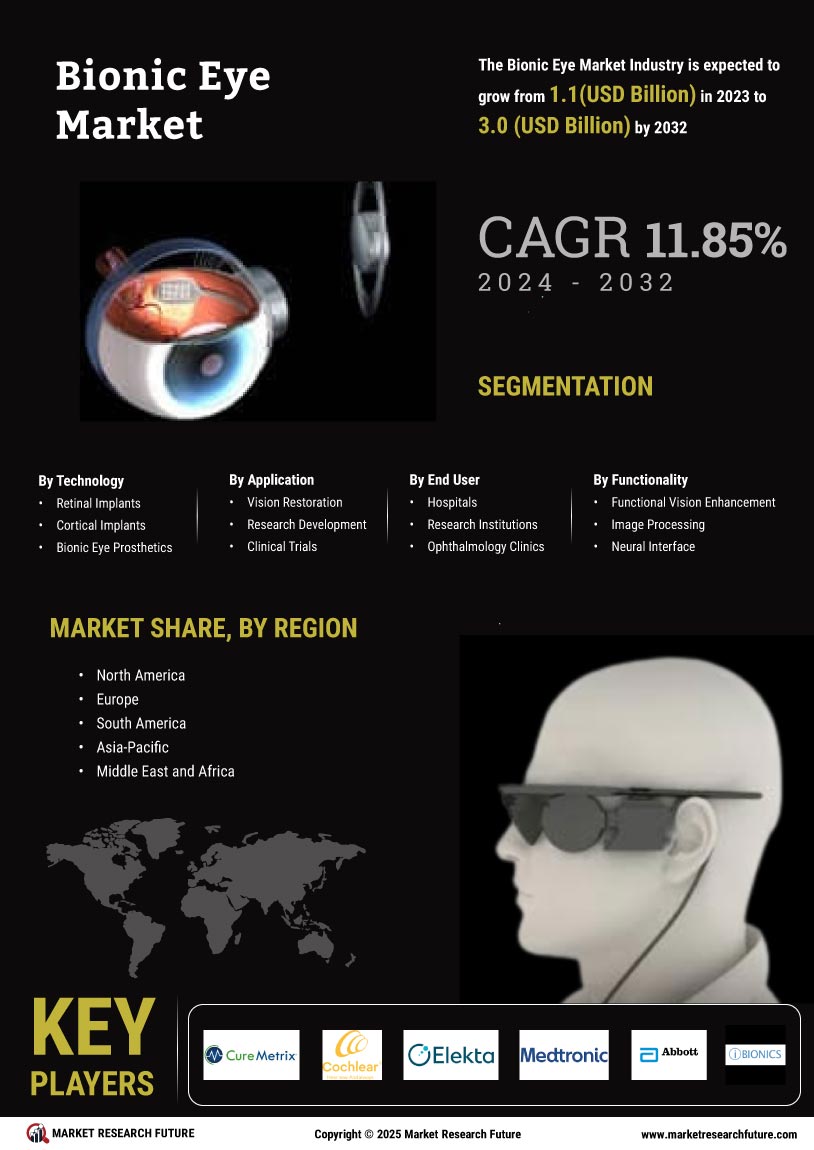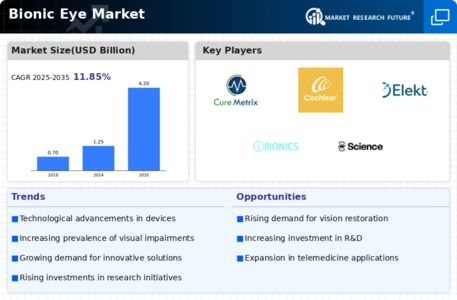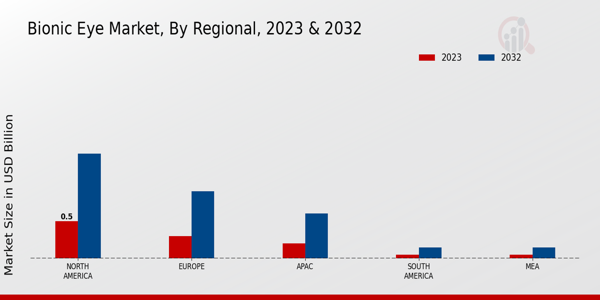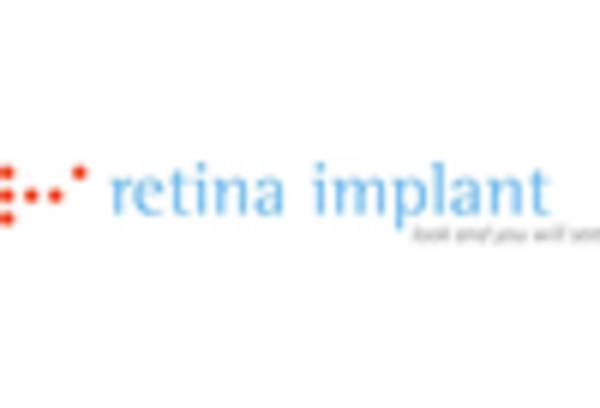Regulatory Developments in Bionic Eye Market
Regulatory developments play a crucial role in shaping the Bionic Eye Market. As the technology evolves, regulatory bodies are establishing frameworks to ensure the safety and efficacy of bionic eye devices. In recent years, there has been a noticeable increase in the approval of innovative bionic eye products, which has encouraged manufacturers to invest in research and development. For example, the approval of new retinal prostheses has opened avenues for commercialization, leading to a projected market growth rate of 15% annually. These regulatory advancements not only facilitate market entry for new products but also enhance consumer confidence in the safety of bionic eye technologies. Consequently, the Bionic Eye Market is likely to witness a surge in demand as more patients seek solutions for vision restoration.
Technological Advancements in Bionic Eye Market
The Bionic Eye Market is experiencing rapid technological advancements that are reshaping the landscape of vision restoration. Innovations in microelectronics, nanotechnology, and biocompatible materials are enhancing the functionality and effectiveness of bionic eyes. For instance, the development of retinal implants that can interface directly with the optic nerve has shown promising results in clinical trials. As of 2025, the market is projected to reach a valuation of approximately 3 billion USD, driven by these advancements. Furthermore, the integration of artificial intelligence in image processing is likely to improve visual outcomes for users, making bionic eyes more appealing to potential patients. This technological evolution not only enhances the quality of life for individuals with visual impairments but also stimulates investment in research and development within the Bionic Eye Market.
Increased Awareness and Acceptance in Bionic Eye Market
Increased awareness and acceptance of bionic eye technologies are driving growth in the Bionic Eye Market. Educational campaigns and advocacy by organizations focused on vision impairment have significantly improved public understanding of bionic eyes. As of 2025, surveys indicate that nearly 60% of individuals with visual impairments are aware of bionic eye options, a notable increase from previous years. This heightened awareness is likely to lead to greater acceptance among patients and healthcare providers, resulting in increased demand for these devices. Moreover, as success stories of bionic eye recipients gain media attention, the stigma associated with using such technologies diminishes. This cultural shift is expected to contribute to a robust growth trajectory for the Bionic Eye Market, as more individuals seek innovative solutions for their vision challenges.
Aging Population and Vision Impairment in Bionic Eye Market
The aging population is a significant driver of the Bionic Eye Market. As individuals age, the prevalence of age-related vision impairments, such as macular degeneration and diabetic retinopathy, increases. By 2025, it is estimated that over 2 billion people will be aged 60 and above, many of whom may experience vision loss. This demographic shift is likely to create a substantial demand for bionic eye solutions, as older adults seek effective means to restore their sight. Additionally, healthcare systems are increasingly recognizing the economic burden of untreated vision impairment, which may further incentivize investments in bionic eye technologies. Consequently, the Bionic Eye Market is poised for growth as it addresses the needs of an aging population facing vision challenges.
Investment in Research and Development in Bionic Eye Market
Investment in research and development is a pivotal driver of the Bionic Eye Market. As competition intensifies, companies are allocating significant resources to innovate and enhance bionic eye technologies. In 2025, it is projected that R&D spending in this sector will exceed 500 million USD, reflecting a commitment to advancing the capabilities of bionic eyes. This investment is likely to lead to breakthroughs in areas such as wireless connectivity, improved image resolution, and user-friendly interfaces. Furthermore, collaborations between academic institutions and industry players are fostering a culture of innovation, which may accelerate the development of next-generation bionic eye devices. As a result, the Bionic Eye Market is expected to thrive, driven by a continuous influx of innovative solutions aimed at improving visual restoration.


















Leave a Comment